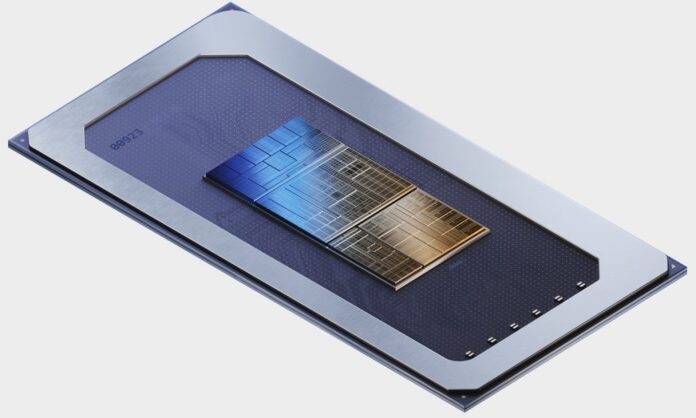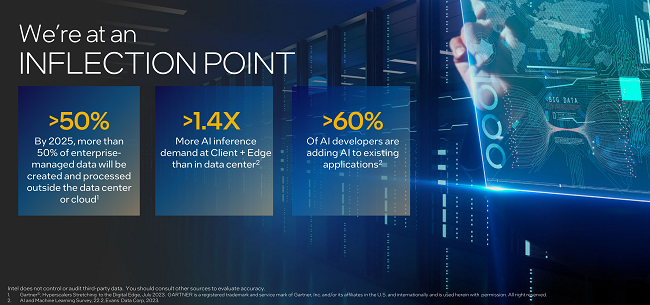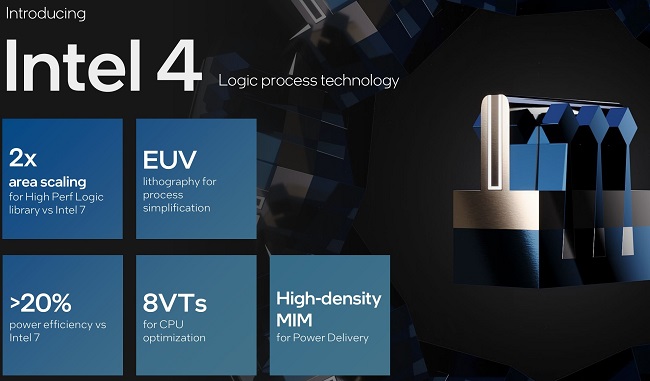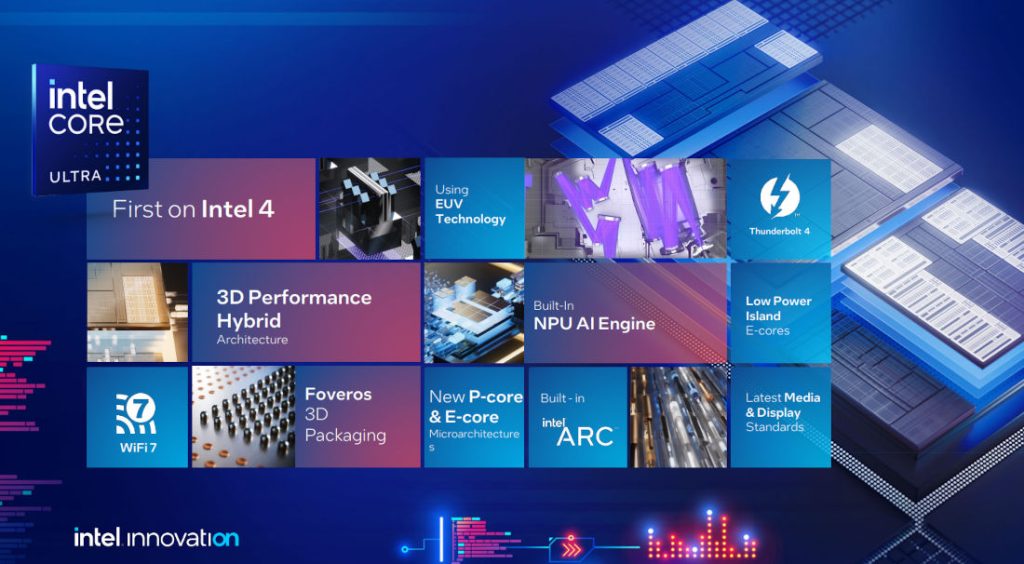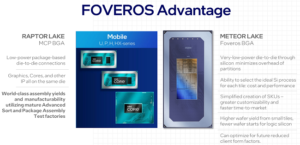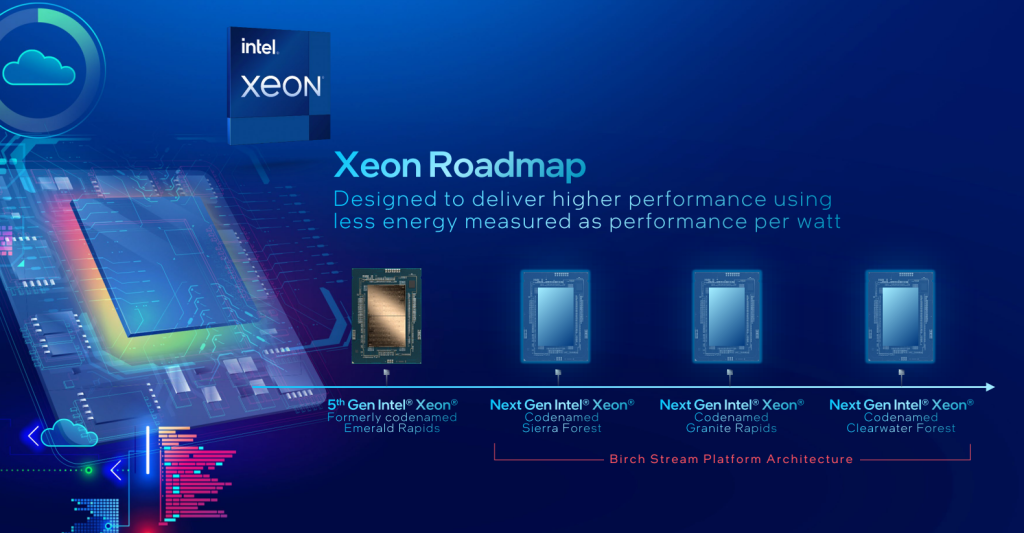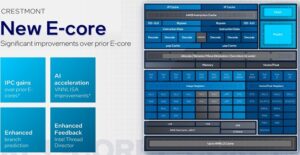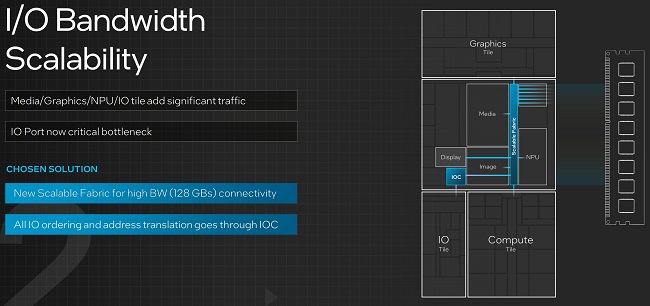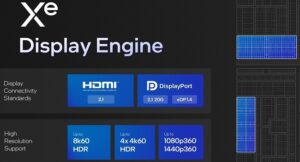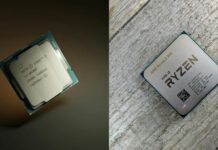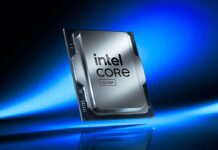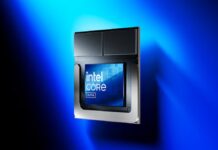Recently, Intel hosted its third annual Innovation Event and unveiled Meteor Lake, a client platform that lets you democratize artificial intelligence across all kinds of workloads, from client devices to edge, network, and cloud.
Progress in Silicon Innovation
With its “five-nodes-in-four-years” program, Intel is making strides in silicon innovation. At the moment, Intel 7 is in high-volume production, Intel 4 is manufacturing-ready, and Intel 3 will be available by the end of the year.
The company showcased an Intel 20A wafer with test chips for its Arrow Lake processor, slated for release in 2024. The Intel 20A introduces PowerVia and RibbonFET to enhance power delivery. The Intel 18A, which incorporates these technologies, will be ready in 2024.
Materials and packaging innovations
As Moore’s Law continues to extend, Intel introduced glass substrates for data-intensive AI workloads. As well, Intel presented a test chip package using Universal Chiplet Interconnect Express (UCIe), a standard that allows chipsets from different vendors to collaborate on AI workloads. This open specification is supported by more than 120 companies.
Meteor Lake’s Transformation
The upcoming client mobile platform, Meteor Lake, moves away from the Intel 7 node to Foveros 3D packaging with EUV lithography.
Meteor Lake breaks CPU functions down into four tiles: compute, graphics, SoC, and I/O. There’s also a Neural Processing Unit (NPU) for AI workloads and LP E-cores for power-efficient tasks.
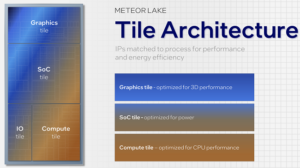
Performance results and new developments in AI
The recent MLPerf AI inference performance results show Intel’s dedication to AI. Intel’s Gaudi2 accelerator handles complex AI tasks well, as shown in these results.
We’re building an AI supercomputer powered by Intel Xeon processors and 4,000 Intel Gaudi2 AI hardware accelerators for Stability AI.
Next-Gen Intel Xeon Processors Preview
Here’s a sneak peek at Intel’s next-generation Xeon processors. Intel’s 5th Gen Xeon processors, launching Dec. 14, promise performance improvements and faster memory.
Sierra Forest will be here in the first half of 2024, with 2.5 times more rack density and 2.4 times more performance per watt than the 4th Gen Xeon. Next up is Granite Rapids, which offers two to three times better AI performance than the 4th Gen Xeon.
Intel’s 18A process node will power the next-generation E-core Xeon, code-named Clearwater Forest, in 2025.
Power management and scalability in silicon
Meteor Lake uses Intel 4 for the compute tile and TSMC N5 for the graphics tile. Disaggregation lets each tile work independently, so it’s more efficient and faster.
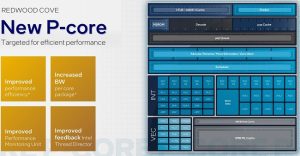
LP E-cores for lighter workloads are optimized by the hierarchical power management system.
The scalability of SoC tiles and bandwidth
In the SoC tile, manufactured on TSMC N6, there’s a Network-on-Chip (NOC) to boost bandwidth. The LP E-cores in this tile are designed for efficiency and have granular voltage control. Advanced wireless connectivity is provided by Wi-Fi 7 and Bluetooth 5.4.
Here are some other improvements:
With the Intel Silicon Security Engine (ISSE), Meteor Lake enhances platform security and mitigates vulnerabilities.
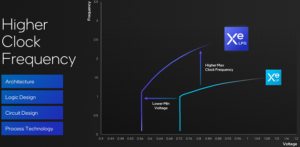
A dedicated neural processing unit (NPU) enables Meteor Lake’s AI capabilities, offering flexibility and compatibility with standardized programs.
Intel’s new Xe-LPG graphics architecture offers discrete-level performance with improved efficiency. For enhanced graphics, it has 8 Xe graphics cores, 128 vector engines, and dedicated Ray Tracing Units (RTUs).
Streaming, decoding, and video playback can be done without powering up the graphics tile with Intel’s Foveros 3D packaging.
Mobile devices will use Meteor Lake, and Intel introduced a new Core naming scheme. On December 14th, Meteor Lake’s first high-end SKU with AI will launch.


